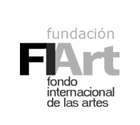Portraiture, like landscape, was much more than a traditional genre, a type of painting that was codified and fixed, once and for all. This explains why it didn’t disappear following the success of the avant-garde isms; why in the twenty-first century it is still around, transfigured and still renewing itself many years after the emergence of the trends that broke away from the pre-modern world that, unfortunately, still prevails and tyrannically rules over a number of areas.
© Carmela García
«Behind the Portrait «is a show that alludes to what lies beyond a portrait, but also to what precedes and surrounds it. It proposes an extended and updated notion of the genre, i.e., of what the term can end up meaning, and of its possible means and modes of representation in an age when digital technology coexists with pencil and paper.
Although the historical avant-garde movements are now quite remote, I feel that the diversity of means and especially of modes we come across in this exhibition is related to a line of research explored by Dada and Surrealism, two libertarian and poetic movements.
A puddle of spilt petrol, a fallen torch, a light transformed into a stain can today be considered portraits, of a person or of a country. In this exhibition presented by Tatiana Kourochkina, the small-scale installation with an oil lamp and a bronze puddle by Los Carpinteros can be interpreted as a portrait of the outdated revolutionary dream and of the present situation in Cuba, a country that escaped one empire to become locked inside another.
The show includes works made in the late twentieth century and early twenty-first century, by artists from different countries and generations selected by the gallery, some of whom enjoy great international acclaim. Although the painting by Yayoi Kusama depicts a pumpkin, the picture is rightly considered a self-portrait for it represents the repetitive and expansive compulsion of this unique Japanese artist.
In the ancient world, being the sitter in a portrait implied a yearning to appear and to last. In today’s world, where awareness of fragmentariness and precariousness has grown, we have portraits of disappearances. Human beings disappear, compellingly replaced by their clothes and jewels, their tools, prostheses and dumps; their selfish image, their unreality, their artifice are set against others.
In the photograph by Chema Madoz the ego is a catapult bearing a propelling letter O. In the work by Silvie Fleury, object (hair curlers) replaces subject (the absent face). The photographic woman composed by Ruud van Empel also has an unreal, artificial air about her, while the faces photographed by Kimiko Yoshida disappear (in this portrait, under heavy jewellery) and only exist as a fantasy of otherness.
In today’s post-natural and therefore strange world, the most meaningful feature of a portrait may be not the sitter but their circumstances. Such is the case in the photograph by Pieter Hugo, the setting of which is a toxic technological dump: poison from the First World displaced in Africa.
In the portrait painted by George Condo the emperor is clothed, not naked. The problem lies in the fact that his face is featureless and therefore seems unreal—stripped of his clothes, he is nothing.
Behind, Before and Around Portraiture by Juan Bufill
Artists: Pierre Gonnord, Willy Verigner, Jean Baptiste Huynh, Joan Brossa, Carmela García, Dany Virgili, Chema Madoz, Eduardo Arroyo, Kimiko Yoshida, Yayoi Kusama, Sylvie Fleury, Ruud van Empel, George Condo, Walter Martin & Paloma Muñoz, Gregori Maiofis, Andrea Nacach, Liu Xiaofang, Malick Sidibé, Pieter Hugo, José Ángel Toirac, Los Carpinteros, Giacomo Santiago Rogado.
Site: Tatiana Kourochkina Galeria d’Art
Title: Behind the portrait
Place: Tatiana Kourochkina Galeria d’Art
City: Barcelona
Country: Spain
Date: 5 octouber to 15 dicember 2012



 Recibirás periódicamente en tu mail una selección de las noticias más interesantes.
Recibirás periódicamente en tu mail una selección de las noticias más interesantes.


Comentarios cerrados